Steel Ladle Construction
Articles
Steel Ladle Safety Lining:
The quality of the safety lining can vary according to the particular shop conditions. For some ladle refining processes such as ASEA-SKF, VAD, etc. the extra protection provided by a higher quality backup (higher alumina or basic) may be justified. Usually, if a higher quality approach is taken, an insulating lining should be used to reduce the possibility of heat loss. The denser safety linings will absorb more temperature from the metal and will require high preheat temperatures to compensate.
Two or three safety brick bottoms are recommended. These can be laid in a combination of rowlock or flat depending upon the overall thickness to be maintained. All exposed joints should contain a full mortar joint to help resist metal penetration. Brickwork must be cut to fit close to the steel shell. The remaining void can be filled with high-quality plastic or ramming material.
Steel Ladle Working Lining, Sidewall, and Bottom:
Before beginning the working lining, it should be determined whether the working bottom brick will be scheduled to be replaced during the lining’s campaign. If multiple bottoms are to be used, then the tilt brick and start sets should be started on top of the safety bottom. By doing this, the working bottom can be replaced while maintaining the full thickness (protection) of the lower sidewall. On the other hand, if the bottom is expected to last the entire campaign, then the working bottom should be installed first with the tilt brick and starter sets on top of this bottom.
The key to any well-constructed ladle is a level sub hearth. The safety bottom (if required) should be made level by troweling a dampened, dense ram-cast material. This will help support the weight of the bottom brick during the installation and prevent hot face joint openings from occurring. Bottom brick can be laid in a soldier (maximum thickness) or rowlock fashion according to the thickness required. The areas around the well block and porous plug most commonly utilize the herringbone construction method. This ensures tight construction and can be used in other areas of the bottom where metal penetration has been a problem.
Regardless of which method is utilized, the void around the working bottom should be air rammed with a high quality 80-90% alumina plastic or ramming mix. This material should have minimal shrinkage at steelmaking temperatures to help keep the bottom brick tight.
The tilt course should be laid in mortar and tapped firmly into place. Brick should be cut to key this course.
The starter sets will be laid on top of the tilt course. The location of these starters should be away from areas of direct steel impingement. The number of starters sets to be used will depend on the size of the ladle and the number of bricklayers working at one time. Usually two and a maximum of four.
When laying semi-universal ladle brick (SULB), continuous brick contact should be maintained from hot to cold face. If a mortar is to be used a dip bed joint should be placed on top of the preceding course. Each subsequent brick should then be dipped into the mortar and slid into place. A mallet is used to set each brick and reduce the size of the mortar joint to 1/16” or less. The mortar can also be used to fill voids between the working and safety linings. This will act as a parting plane and facilitate skull removal in the event metal penetration occurs. At the top of the ladle, the brick should be laid close to the retaining ring, leaving a void large enough to accommodate a rammer head. This area should be rammed with 80% -85% alumina phosphate bonded plastic to help keep the lining tight and prevent metal penetration behind the brickwork.
A well-constructed steel ladle lining can increase ladle life and reduce refractory cost per ton. This is not a complete guide, further questions or more detail requested, please contact us!

